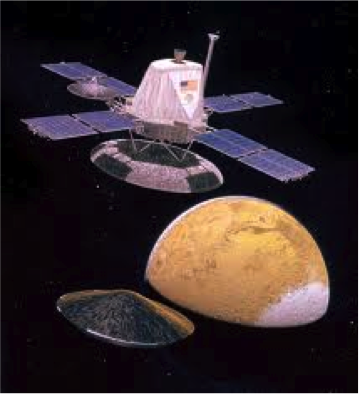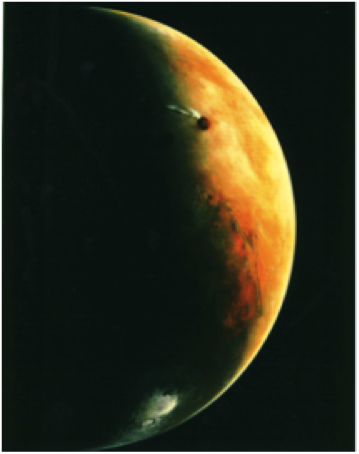- To obtain high resolution images of the Martian surface
- Characterize the structure and composition of the atmosphere and surface
- Search for evidence of life.

NASA's Viking Mission to Mars was composed of two spacecraft, Viking 1 and Viking 2, each consisting of an orbiter and a lander. The orbiters mapped the surface of Mars at a resolution of 150 to 300 meters. Some areas were imaged at 8 meter resolution. The landers obtained high resolution surface images and analyzed surface samples for signs of life. Weather stations and seismometers returned data.
Viking 2 arrived at Mars on August 7, 1976. The lander touched down in Utopia Planitia (47.97° N, 225.74° W) on September 3, 1976. The orbiter operated until July 25, 1978 and the lander continued until April 8, 1980.
For more information about the Viking 2 Orbiter mission see the following links:
Instrumentation and Access to Data:
IRTM 15 μm, ~0.5 millibar pressure level atmospheric temperature
Mars Atmospheric Water Detector (MAWD)
Surface Temperature and Albedo (IRTM)
Clouds (from imaging)
Clouds (from IRTM)
Useful Reference
Viking 2 arrived at Mars on August 7, 1976. The lander touched down in Utopia Planitia (47.97° N, 225.74° W) on September 3, 1976. The orbiter operated until July 25, 1978 and the lander continued until April 8, 1980.
The primary mission objectives were
For more information about the Viking 2 Orbiter mission see the following links:
Instrumentation and Access to Data:
IRTM 15 μm, ~0.5 millibar pressure level atmospheric temperature
Mars Atmospheric Water Detector (MAWD)
Surface Temperature and Albedo (IRTM)
Clouds (from imaging)
Clouds (from IRTM)
Useful Reference
"Scientific Results of the Viking Project", vol. 82, no. 28, the Journal of Geophysical Res. Sept 30, 1977
 PDS: The Planetary Atmospheres Node
PDS: The Planetary Atmospheres Node



